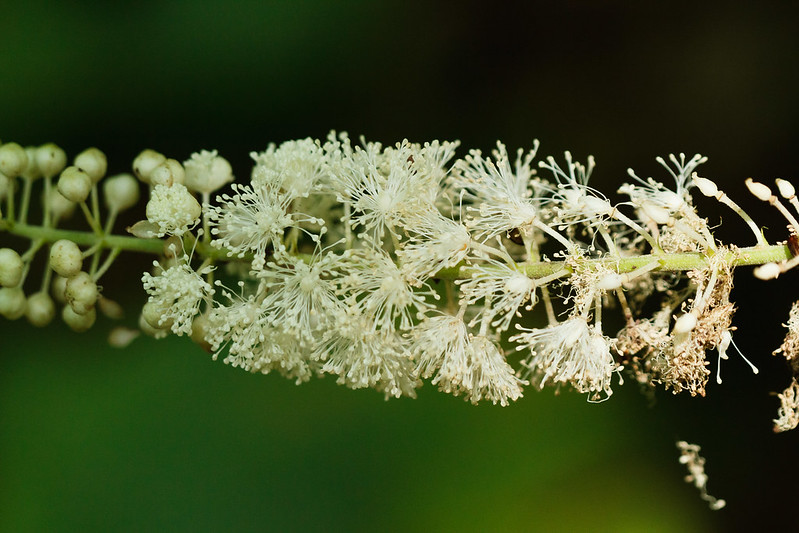Table of Contents
- What are the functions of Rhapontic Rhubarb vs Black Cohosh?
- What are the benefits of Black Cohosh vs Estroven?
- Can Evening Primrose and Black Cohosh be used to relieve hot flashes?
- What’s the difference: Black Cohosh vs Blue Cohosh?
- Can you take Black Cohosh and Ashwagandha together?
- What are the benefits of Black Cohosh and Wild Yam?
- Can you combine Black Cohosh and Vitex together?
- What are possible Black Cohosh interactions with medications?
- Want to know more?
- Sources
What are the functions of Rhapontic Rhubarb vs Black Cohosh?
The functions of Rhapnotic Rhubarb involve reducing anxiety and improving physical and mental functions in perimenopausal and menopausal women. On the other hand, the functions of Black Cohosh in hormone replacement therapy involve treating hot flashes.
Nevertheless, a study published in 2006, reports back that black cohosh may produce the following side effects:
- Nausea
- Dizziness
- Headaches
- Redness of the skin
- Stomach and bowel problems
- Liver damage
So, they’re best used under the supervision of a doctor.
What are the benefits of Black Cohosh vs Estroven?
The benefits of Black Cohosh and Estroven consist in relieving symptoms related to menopause and while black cohosh is mainly involved in alleviating hot flashes and improving vasomotor functions, estroven has other wide arrays of benefits including the following:
- Reducing night sweats and hot flashes
- Joint pain reduction
- Improves mental and physical fatigue
- Relieves stress
- Improves bladder health
- Decreases anxiety
- Treats vaginal dryness
- Enhances low libido
It’s also worth noting that some estroven products include black cohosh and may produce undesired side effects. Thus, it’s better to consult your doctor first before taking them.
In the video below, Dr. Seibel talks bout alternatives to estrogens for your menopause when you are having low estrogen. Find out supplements and herbs that lower hot flashes in menopause such as black cohosh, soy, Remifemin, icool, estroven and red clover, Replens:
This is our recommended Black Cohosh supplement (Amazon’s Choice):

Can Evening Primrose and Black Cohosh be used to relieve hot flashes?
Evening primrose and Black Cohosh have been proven to relieve symptoms of hot flashes in menopausal and perimenopausal women. However, a study published in the Journal of Education and Health Promotion, in 2018, revealed that Black Cohosh is more effective in reducing the number of hot flashes and improving quality of life than Evening primrose.
That being said, both supplements shouldn’t be mixed with other medications unless prescribed by a healthcare professional.
What’s the difference: Black Cohosh vs Blue Cohosh?
The difference between Black Cohosh and Blue Cohosh is that the former comes from Ranunculaceae botanical family while the latter comes from the Berberidaceae Botanical family.
Additionally, black cohosh is used in treating menopause symptoms including hot flashes while blue cohosh is used in inducing labor and making childbirth a fast process. That being said, Black Cohosh is much safer than Blue Cohosh as the latter can cause the following complications:
- Diarrhea
- Stomach pain
- Nausea
- Headaches
- Increased blood sugar levels
- Increased blood pressure
- Birth defects
- Cancer (breast, ovarian, uterine, and endometrial)
- Uterine fibroids
Can you take Black Cohosh and Ashwagandha together?
You can take Black Cohosh and Ashwagandha together since there are no known interactions between them, however, it’s best to consult your doctor first before mixing any medication together to avoid any serious side effects.
Ashwagandha can also help with relieving menopause symptoms due to its anti-inflammatory effect through its steroid composition. Additionally, it reduces hot flashes, and urinary symptoms and increases the levels of estradiol, FSH, and luteinizing hormone.
What are the benefits of Black Cohosh and Wild Yam?
The benefits of Black Cohosh and Wild Yam include supporting women through the hormonal transition of menopause. Both ingredients are considered phytoestrogens that help in reducing symptoms of menopause.
However, you should never use black cohosh and wild yam if you’re pregnant, may become pregnant, or are breastfeeding.
Can you combine Black Cohosh and Vitex together?
You can combine Black Cohosh and Vitex together safely, especially if you’re looking for natural solutions to treat symptoms of pre-menstruation and menopause. Black Cohosh gives estrogen-like effects while Vitex gives progesterone-like effects.
However, it’s wise to consult your doctor first before deciding to mix any medications or supplements together.
What are possible Black Cohosh interactions with medications?
Possible Black Cohosh interactions with medications include the following:
- Daclizumab (serious interaction)
- Nevirapine (mild interaction)
- Tamoxifen (mild interaction)
- Tenofovir DF (mild interaction)
- Zidovudine (mild interaction)
While there are no reports of severe or moderate interactions, it’s pivotal to consult a healthcare professional before mixing any medications with Black Cohosh.
Want to know more?
Click the links below to access the individual topic pages:
Sources
This article makes use of information from the U.S. National Library of Medicine under the terms of the Creative Commons Attribution 4.0 International License.
- InformedHealth.org [Internet]. Cologne, Germany: Institute for Quality and Efficiency in Health Care (IQWiG); 2006-. Relieving menopause symptoms on your own. [Updated 2020 Jul 2]. Available from: https://www.ncbi.nlm.nih.gov/books/NBK279307/
- Mehrpooya M, Rabiee S, Larki-Harchegani A, Fallahian AM, Moradi A, Ataei S, Javad MT. A comparative study on the effect of “black cohosh” and “evening primrose oil” on menopausal hot flashes. J Educ Health Promot. 2018 Mar 1;7:36. doi: 10.4103/jehp.jehp_81_17. PMID: 29619387; PMCID: PMC5868221.


